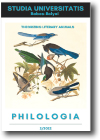EXPERIMENTAL BODIES: ANIMALS, SCIENCE, AND COLLECTIVITY IN CONTEMPORARY SHORT-FORM FICTION
EXPERIMENTAL BODIES: ANIMALS, SCIENCE, AND COLLECTIVITY IN CONTEMPORARY SHORT-FORM FICTION
Author(s): Shannon LambertSubject(s): Comparative Study of Literature, British Literature, American Literature
Published by: Studia Universitatis Babes-Bolyai
Keywords: laboratory animals; experimentation; flash; form; fragmentation; we-narrative; synecdoche; juxtaposition;
Summary/Abstract: Experimental Bodies: Animals, Science, and Collectivity in Contemporary Short-Form Fiction. In the relatively short time since its establishment as an area of research, literary animal studies has become a burgeoning field covering a significant amount of intellectual terrain: traversing, for example, thousands of years of history and an array of human-animal encounters like pet ownership and breeding, hunting, farming, and biotechnology. However, few scholars have focused their attention on “experimental animals”—that is, animals used in experiments within and beyond laboratories—and fewer still have investigated the aesthetic and ethical challenges of representing these animals (and literary animals more generally) as collectives. This article uses the polysemy of “the experimental” to think together innovative literary forms and descriptions of scientific research and experimentation. In particular, it considers some of the tensions that arise in literary experiments that feature representations of animal collectives in science. In place of an in-depth study of a single text, I draw on Natalia Cecire’s vocabulary (2019) of the “flash” to explore how Tania Hershman’s short story “Grounded: God Glows” (2017), Karen Joy Fowler’s “Us” (2013), and an excerpt from Thalia Field’s Bird Lovers, Backyard (2010) constitute an ecology of experimental texts which, when considered alongside one another, highlight patterns of animal multiplicity and movement. Foregrounding literary strategies like fragmentation, we-narrative, and synecdoche and juxtaposition, I argue that snapshots of animal collectives in Hershman, Fowler, and Field accumulate into a shimmering and hybrid multitude of bodies resistant to uncritical forms of literary anthropomorphism and impersonal scientific practices that frequently transform such bodies into readable and interpretable “data.”
Journal: Studia Universitatis Babes-Bolyai - Philologia
- Issue Year: 67/2022
- Issue No: 2
- Page Range: 89-111
- Page Count: 23
- Language: English

